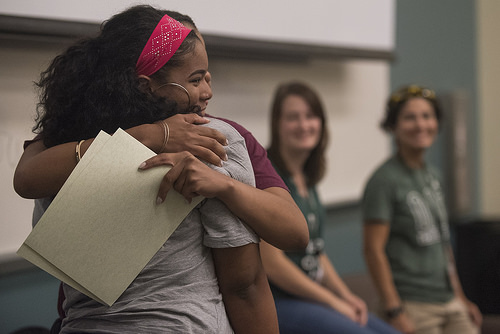
In a recent blog post, I suggested that those who doubt students’ ability to direct their own learning because “you can lead a horse to water, but you can’t make him drink” might want to focus not on the horse, but what he’s being urged to drink.
Students are more likely to try ambitious, self-directed learning in a “delicious” environment, where high expectations, group-worthy challenges, equitable participation, autonomy/choice, and respectful relationships are the norm. Without these, many students won’t risk it. Instead, they’ll push their teachers and classmates to keep learning demands simple, in balance with classroom culture. For example, in a recent classroom observation, I noticed that when working in groups, lower-performing students either waited for the high performers to find and share the answers, or tuned out entirely. When we debriefed, the teacher shared her frustration with this pattern, which she interpreted as evidence that some students didn’t care to do more than “just get by”—and in the face of this behavior, she wondered whether it was worth it to experiment with new, more challenging, teaching practices. Richard Elmore calls this push-and-pull “the contract”—a mechanism through which the status quo is maintained, despite our good intentions.
Looming future statistics (such as: 65% of children entering grade school today will end up working in jobs that don’t even exist yet) make it seem like working adults can kick the challenges of our transforming economy down the road for students to deal with later. Of course, those of us committed to Linked Learning pathways realize these new demands require new teaching and learning methods— and new methods are likely to require job-embedded, ambitious adult learning right now—to have any chance at a more equitable, complexity-tolerant future.
Are adults leading their own learning in your workplace, or are they enforcing “the contract,” ratcheting down the complexity to a level their colleagues, leaders, or system can bear? If simple solutions are the most common response to complex problems in your workplace, it might be time to test the “water”:
• Expectations: Do all the adults demonstrate learning-supportive mindsets, behaviors and values? Or is professional learning only required for some—with others “off the hook” because they know it all already?
• Challenge: Is professional learning worth your time and energy? Does it address the actual dilemmas of your daily work?
• Participation: Are norms and protocols used to address inequity and promote productive collaboration in the moment—or are inequity and collaborative tensions discussed later, “behind the scenes”?
• Autonomy: Is creativity and curiosity valued in your workplace? Is there time and space to grapple with your own questions—or are you expected to implement other people’s solutions?
• Relationships: Who is respectful and caring in your workplace? What happens when trust is breached? How is it restored?
Noticing problems with your learning environment—whether for young students or adult learners—is the first step. Tune in next month to hear some ideas about how to intervene in and improve it.
-Jennifer Lutzenberger Phillips
)